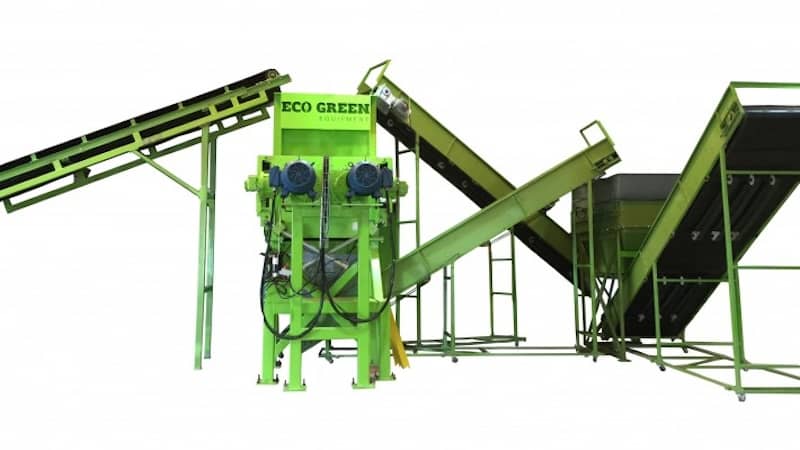Among the many issues facing countries worldwide are the problems of too much garbage and not enough electricity. As a society, we are working to address these pertinent 21st-century issues. While many initiatives focus on providing electricity and others seek to reduce waste, waste-to-energy technologies tackle both simultaneously.
Refuse-Derived Fuel (RDF) and Solid Recovered Fuel (SRF) are two prominent options among the various forms of feedstock used in waste-to-energy processes. Both fuels come from municipal solid waste (MSW); otherwise, they are pretty different. Once you understand the differences between RDF and SRF, you can make informed decisions when planning and implementing innovative waste-to-energy initiatives.
Understanding MSW, RDF, and SRF
There’s a lot of acronyms when it comes to garbage. Before we discuss different applications, let’s be clear about what all of these letters mean.
Municipal Solid Waste (MSW):
MSW is more commonly simply called trash or garbage. Think of what you put out on the curb and what you see piled up at the dump. MSW includes:
- Household waste like food scraps, plastics, glass, metals, textiles, and discarded electronics.
- Commercial waste like office supplies, packaging, and other discarded commercial products.
- Institutional waste from schools, hospitals, and government buildings, such as paper, cafeteria waste, and medical waste
- Yard Waste like grass clippings, leaves, and branches.
Many individual types of MSW can be recycled, but not all of them. This collection of waste is the basic pool of garbage that RDF and SRF come from.
Refuse-Derived Fuel (RDF):
RDF is a broad category of fuel produced from an MSW shredder processing garbage. It typically includes combustible components, plastics, paper, cardboard, and textiles containing carbon. The production process involves basic sorting, shredding, and drying the waste materials so they can burn hot and fast. RDF varies in quality and composition, depending on where it comes from and how much it is processed. It is a cheap yet inconsistent fuel for waste-to-energy initiatives.
Solid Recovered Fuel (SRF):
SRF is still trash but a more refined type of RDF. Industries use it for high-efficiency energy generation processes, such as cement kilns and advanced thermal treatment plants. SRF production involves intensive sorting, drying, and using SRF shredders to form a consistent particle size. This ensures a consistent and higher quality fuel. The waste materials are often further processed to remove non-combustible and hazardous components. Producers have to make SRF according to specific quality standards. However, the benefits that come from a more refined fuel make it more expensive to produce.
Key Differences Between RDF and SRF
1. Quality Control:
RDF: Less stringent processing and quality control
SRF: Strict quality standards and consistent processing
2. Calorific Value:
RDF: Lower and more variable calorific value
SRF: Higher and consistent calorific value tailored to meet specific industrial requirements
3. Applications:
RDF: Ideal for facilities that handle variable fuel quality, such as mass burn incinerators
SRF: Ideal for high-efficiency applications like cement kilns and gasification plants
4. Environmental Impact:
RDF: Higher emissions due to inconsistent composition and presence of contaminants
SRF: Lower emissions and better environmental performance, thanks to stringent processing and removal of hazardous materials
Considering these differences, you may be thinking that one type of fuel is inherently better than the other. However, as these case studies show, there are useful applications for both RDF and SRF.
RDF in Mass Burn Incineration – Jakarta, Indonesia
Jakarta, the capital of Indonesia, is facing a growing waste management crisis with overflowing landfills and increasing environmental pollution as people move from rural areas to the city.
To reduce the pressure on landfills, city authorities recently authorized the construction of one of the world’s largest RDF incinerators to process municipal waste and create energy. The RDF is made by shredding and drying mixed municipal waste, which includes high volumes of plastics, paper, and textiles from the city. The main challenge is the variable quality of RDF, which may lead to fluctuating energy outputs and air pollution. The Jakarta incinerator is to have the latest advanced emission control systems to manage these issues.
Outcome: Despite the challenges, the RDF-based power plant, set to be operational at the end of 2024, will process 2500 tons of waste daily. The project demonstrates that, with appropriate controls and upgrades, RDF can be a great option for large-scale waste management in developing cities.
SRF in Cement Kilns – HeidelbergCement, Germany
HeidelbergCement is one of the largest building materials companies in the world. As producing cement is highly energy intensive, it has aimed to reduce its carbon footprint and comply with EU emission standards.
The company switched from coal to SRF in its cement kilns to meet these goals. The SRF was produced from carefully sorted and processed waste materials, like shredded tires, ensuring a high calorific value and consistent quality. The main challenge was the higher initial production cost of SRF compared to coal.
Outcome: The switch to SRF resulted in a 25% reduction in CO2 emissions and a significant decrease in other pollutants. The consistent quality of SRF improved the efficiency of the kilns, reducing the operational costs after the initial investment. This case illustrates the long-term economic and environmental benefits of using high-quality SRF in industrial applications.
Conclusion:
Knowing the difference between SRF and RDF is a critical first step in whichever type of waste-to-energy initiative you are scheming. Some plants specialize in creating RDF, while others invest in more equipment to produce higher-quality SRF products. Working with both of these fuels aids our collective movement toward a cleaner and brighter future.




